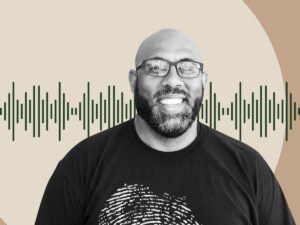
April 25, 2018; New York
In this age of electronic communications, we often take the post office for granted, but it remains a powerful institution. As the US Postal Service (USPS) website indicates, 47 percent of the world’s mail volume is handled by the USPS; the website adds that if it were a private sector company, “the Postal Service would rank 37th in the 2017 Fortune 500. In the 2017 Global Fortune 500 list, we ranked 99th.” The business employs over 500,000 career employees, has annual revenues of $69.6 billion, and operates 30,825 “retail offices” nationwide.
It is this last aspect—the ubiquity of post offices across the nation—that has spurred legislation (Senate Bill 2755), introduced last week by US Senator Kirsten Gillibrand (D-NY), that would require every post office to provide basic banking services. Interestingly, the idea of post offices offering banking services is not new. From 1911 to 1967, post offices offered savings and deposit services for Americans (although not loan products). At one time, Americans held more than $3 billion in deposits through postal banking ($30 billion in inflation-adjusted 2018 dollars). Other countries, including Japan, Germany, China, and South Korea, continue to offer banking services through their postal networks.
The idea, notes Eric Levitz in New York magazine, is that “By requiring the post office to provide basic financial services, Gillibrand’s bill would significantly mitigate the economic exploitation of America’s most vulnerable people, punish predatory lenders—and increase federal revenue—all without requiring policy wonks to navigate uncharted territory, or even break a sweat.”
“This is a solution to take on payday lenders, to take on the problems that the unbanked have all across the country,” explains Gillibrand.
As Levitz notes, of the postal system’s 30,000-plus locations, 59 percent are located in “banking desert” zip codes that have either no bank branches or just one.
Sign up for our free newsletters
Subscribe to NPQ's newsletters to have our top stories delivered directly to your inbox.
By signing up, you agree to our privacy policy and terms of use, and to receive messages from NPQ and our partners.
Startup funding could come from a treasury loan or a congressional appropriation. Long-term, the Post Office would likely earn money, so there would be no taxpayer cost. A 2014 study conducted by the Postal Service’s Inspector General found that a postal banking system was likely to generate almost $9 billion in annual revenue. Internationally, post offices that offer banking services on average generate 14.5 percent of total revenues from banking services.
“It is really an elegant solution,” Gillibrand observes. “You have a system that already works. And you have the ability to let the unbanked have banking in a way that’s affordable.”
Daniel Maran of the Huffington Post explains that, “Under Gillibrand’s proposal, Americans could cash paychecks and deposit money in accounts free of charge at each post office location. Deposits would be capped at the larger of two amounts―$20,000, or the median balance in all American bank accounts. The postal banks would be able to distribute loans to borrowers of up to $1,000 at an interest rate slightly higher than the yield on one-month Treasury bonds, currently about 2 percent.” By contrast, a Pew Charitable Trusts report found that average payday loan of $375 typically costs a borrower $520 in interest and fees.
According to the Federal Deposit Insurance Corporation (FDIC), 33.5 million households are either “unbanked”―i.e., have no bank account at all―or “underbanked,” meaning they still depend on payday lending and similar services. According to a 2011 KPMG study, the average underserved household spends $2,412 a year “just on interest and fees for alternative financial services.” The same study found that the average income for these families is $25,500; in short, these families pay over nine percent of their limited incomes on financial fees.
Black and Latinx households are disproportionately affected. The unbanked rate among Black households is 18.2 percent, compared with seven percent overall. “There is a huge racial justice issue,” observes Gillibrand. “The average person who gets a payday loan is a 44-year-old African American single mom. It overwhelmingly affects communities of color.”
Mehrsa Baradaran, author of How The Other Half Banks, advised Gillibrand on the legislation. “It’s the most important thing that we can be doing to make people’s lives easier that is basically cost-free to the taxpayer,” remarks Baradaran, a University of Georgia law professor.—Steve Dubb













